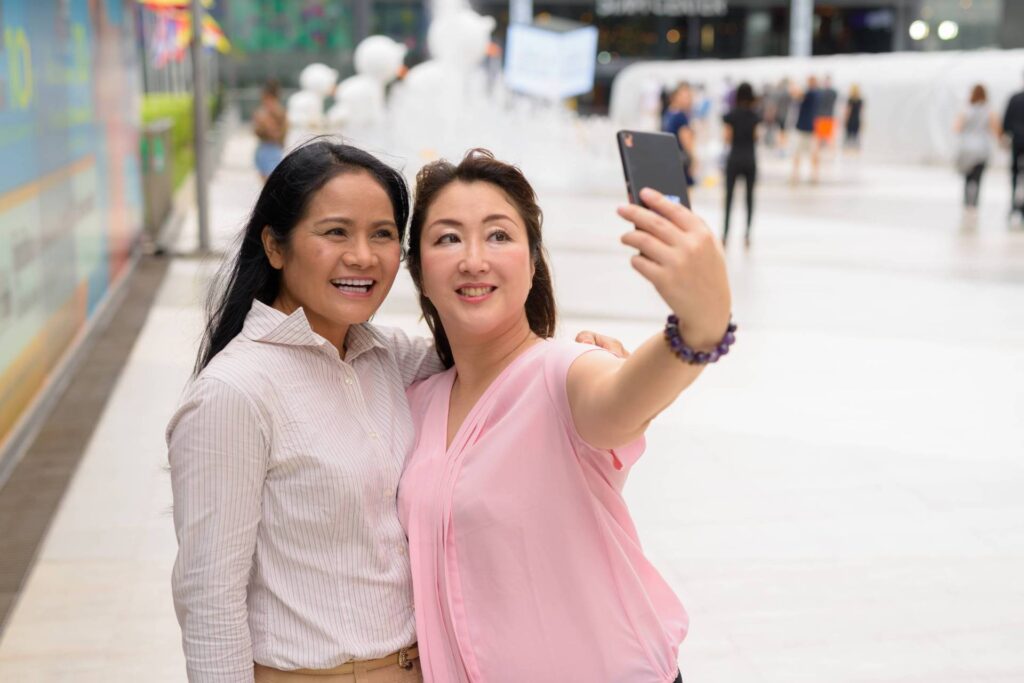
Memory

How individuals or groups process and store information, experiences, and data (received through all senses) for future recall.
Story: Living Stories
Grandma Khadija had just finished telling Amina a story about a wise king who defeated his enemies with kindness.
Amina: Grandma, how can you remember all these stories? You should write them down so we don’t forget them.
Grandma Khadija: My dear, we have been telling these stories for generations, from one person to another, from one ear to another. They are a part of us, of our history, our culture. They live in our memories and in our hearts.
Amina: But what if we forget them?
Grandma: Then we will have lost a part of ourselves. But it is not just about remembering the stories. It is about the way we tell them, the way we pass them on. When we write them down, they become fixed, rigid, and lifeless. They are no longer our stories but just words on a page. They lose their soul.
Amina: But what if we don’t tell them to the next generation? What if they don’t care about our stories?
Grandma: Amina, my girl, don’t worry. As long as we keep telling the stories, they will never be lost.

Why does it matter?
Examples from the Bible
- Jakob was fleeing from his brother. After a dream, he built an altar to remember God’s promise to be with him (Genesis 28:10-19). He made another “memorial altar” after his brother Esau accepted his apology (Genesis 33:20, 35:1-3).
- After a victory over the Amalekites, Moses instructed Joshua to write it down as a permanent reminder and build an atlas as a reminder (Exodus 17:8-16).
- After God allowed the Israelites to pass through the Jordan, two altars with twelve stones each representing the twelve tribes, this memorial was explicitly set up so that the Israelites could tell the story again if the next generation asked about the altar (Joshua 4:1-9).
- The “Shema Yisrael” (Israel’s Declaration of Faith) is one of the best examples of multiple orality methods used for memory. The Israelites had to repeat it repeatedly to their children, talk about it everywhere, tie it to their hands and foreheads, and write it in the house (Deuteronomy 6:4-9).
- In Psalm 119, almost every verse refers to God’s Word. In Psalm 136, every verse ends with “His love endures forever.” These songs are written to be memorable for oral cultures. It uses acrostics, poesy, and rhythm (it was a song) as additional memory tools.
Real-life examples
- In many countries in Africa and Asia, one must listen to the men gathered at the corner or the gossiping women at the market to know what is going on in the village. It is like the local newspaper in oral form.
- Public speakers in the Philippines use redundancy very frequently. Pastors will often formulate a thought in English before using a local language to repeat and explain it.
- A Russian-German woman memorized 2000 Christian hymns. Christians who suffered persecution under the Soviet Union had hundreds of hymns memorized. That was their way of remembering Biblical truths without relying on forbidden written text.
- In Germany, starting with grade 8, we were allowed to use calculators in school. Sometimes even simple additions and the multiplication table were solved using a calculator. An evident decline in my classmates’ mental math can be observed from that moment.
Relevance

All orality strategies lead to better memory, especially when narrative, rituals, and the performing arts connect memory with emotions. Walter Ong says: “You know what you can recall.”1 With this in mind, do people who know where it is written really know more?
People in the LOR context learned to rely on text as the primary way of recording information. The reliance on written memory, especially in the digital age, is a significant factor for people not relying on their memory. How will a generation in the digital age (who lack the excellent HOR memory) cope with the challenges of retaining information without gadgets?
Permanence and accuracy of transmission are advantages of recorded/written memory. This is especially true in LOR cultures. Collectively, they maintain a vast body of literature, and personally, they write notes, to-do lists, and calendar entries as reminders. On the other hand, HOR people rely on the collective memory of a group that remembers important information by utilizing stories, rituals, etc. “Groups remember more than individuals. Collective memory is always dramatically better than individual memory.”2
Emphasizing the importance of God’s written Word in a HOR culture will have little effect.3 The Bible is full of experiences and rituals, and most of it is written as narrative. In such contexts, the Biblical truth must be translated into events that can be experienced as a group and memorized as narrative. These methods must be explored and utilized to be effective.
News in HOR cultures travels by “word of mouth.” Theology must therefore be packaged in a way that does not require a booklet to be passed on. Instead, it must be packaged in easy-to-remember stories that are passed on orally. Church Planting Movements (CPM) use stories and collective memory to disseminate God’s Word quickly.
Orality preference continuum
The two poles of the continuum are clearly evident for this trait.
HOR cultures heavily rely on arts, narrative, rituals, and the group as a collective memory of past events and knowledge. LOR people cannot match their mental memorization capabilities and retrieval.
LOR people adopted text and other information recording tools, making them permanent for future generations.
Only a few people fit on either end of the spectrum. They can be found somewhere in the middle.
| Very high | High | Low | Very low |
|---|---|---|---|
| Upcoming events are remembered by associating them with other events or stories. | People can remember upcoming events without needing to take note of them. | Significant events are written down in a calendar. | All events are written into a calendar, and every day the calendar is checked to remind oneself of upcoming events. |
| Oral archive with a local “historian” who keeps the local lore. | Some songs and music are collected in “song books” to preserve consistency. | Some songs and music are collected in “songbooks” to preserve consistency. | Non-oral archive (written, recorded). |
| Collective memory access/retrieval. | We all share our collective stories but sometimes record them for posterity. | We heavily rely on our recorded archives but look to the local experts for confirmation. | Individual memory access/retrieval. |
What has been discovered?
Repetition of information (redundancy) is essential for oral cultures to ensure that information is engraved into memory. This is necessary if the listener cannot return to the original source or written information.4
Repetition reflects the oral style that cognitive psychologists Robert McCauley and Thomas Lawson note enhances memory. Oral repetition reinforces the message behind the story but also provides an opportunity for entertaining children and reflection on fond memories passed from one generation to the next.5
Information connected with emotion takes priority in the brain, is stored better in our memory, and can be retrieved easier. Emotional information tends to be remembered better than contextual and conceptual information.6
The extended use of a smartphone has adverse effects on memory. If one can rely on external memory (smartphone, notebook), the mental capacity to remember will decline if not used.7
Music and the arts embed things in our memory and even remain with chronic brain disorders – Alzheimer, dementia, and brain injuries.8

Additional resources
- Discover more about Memory through our training materials at Orality.Academy!
- How to learn any language in six months!
- Drawing can be used as a remembering tool.
- Walter J Ong, Orality and literacy: the technologizing of the word (London: NY: Routledge, 2002), 33. ↩︎
- Jerry Trousdale, Miraculous Movements: How Hundreds of Thousands of Muslims Are Falling in Love with Jesus (Nashville: Thomas Nelson, 2012), 102. ↩︎
- In some oral cultures, authority comes from the person telling it and not the source itself. Timothy Hatcher, “Orality as Contextualization in South Asia,” Evangelical Missions Quarterly 58, no. 1 (2022): 19–22. Even in the USA, a LOR context, only 5% of young believers daily read God’s word (Mike Nappa, The Jesus Survey: What Christian Teens Really Believe and Why (Grand Rapids, Mich: Baker Books, 2012), 117). ↩︎
- Ong, Walter J. 2002. Orality and literacy: the technologizing of the word. London: NY: Routledge. https://monoskop.org/images/d/db/Ong_Walter_J_Orality_and_Literacy_2nd_ed.pdf. ↩︎
- Steffen, Tom; Bjoraker, William. The Return of Oral Hermeneutics: As Good Today as It Was for the Hebrew Bible and First-Century Christianity. Wipf & Stock Publishers. ↩︎
- Kensinger, Elizabeth A., and Suzanne Corkin. “Memory enhancement for emotional words: Are emotional words more vividly remembered than neutral words?” Memory & cognition 31, no. 8 (2003): 1169-1180. ↩︎
- Tanil CT, Yong MH. Mobile phones: The effect of its presence on learning and memory. PLoS One. 2020 Aug 13;15(8):e0219233. doi: 10.1371/journal.pone.0219233. PMID: 32790667; PMCID: PMC7425970. https://www.ncbi.nlm.nih.gov/pmc/articles/PMC7425970/. ↩︎
- https://www.ncbi.nlm.nih.gov/pmc/articles/PMC7425970/. ↩︎
